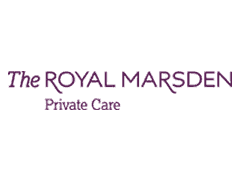Organisations today have a large amount of data stored digitally, often on different systems. The challenge facing many organisations is how to share or transfer this information.
Different solutions have been developed, based on different technologies, and generally dependent on the first systems to be integrated.

Many organisations have the following types of digital information:
- Emails and contacts, usually (for business) stored within a version of Microsoft Office
- CRM (Customer Relationship Management) – the market leaders link seamlessly with Microsoft Office, which tends to mean deployment on Windows servers.
- Email Contact List Management – most email marketing systems developed on Linux web servers and integrate very easily with websites.
- Accountancy – dominated by SAGE, although there are several other accountancy software systems in common use
- Membership or booking system databases – these exist in a range of formats from local access databases through to hosted applications. Most derived from and integrate well with websites
- Website content – most large websites store the information within a database allowing this to easily be edited.
- Payment systems – either in house (if you have PCI compliance) or using a 3rd party provider. As standard most integrate with websites.
- Social media content – including posts, updates and attachments. Some companies are starting to realise the importance of archiving this.
- Marketing data – generated digitally by website, email marketing or search marketing activities
How do you decide which ones to integrate?
It is nearly always better to allow for ease of data transfer between all systems – with the best being automatic or seamless data transfer. The time to be cautious here is with secure or private data. There are financial benefits of keeping some data (private medical data or credit card records) separate from website or email content as different levels of security are appropriate for each. This is where a restriction on what data can be transferred, by whom and how is useful.
Another factor to consider is timeliness of the data. Does the data need to be up to date or can it be updated once per day. In reality most of the marketing analytics software is not real time, but updates – maybe every few hours. This alters the technical mechanism used. For example when integrating with a payment gateway, or application form a response is needed ‘within seconds’ so a real time integration method must be used. Yet printing of a picking list from a warehouse, or passenger list for a transport journey is a type of task that would be scheduled at a regular interval.
Lastly when looking at integrating systems it is important to consider where the data is best analysed. What is important here are the extra reporting and analysis available. For example email marketing systems tend to have excellent information on open rates, forward rates and excellent preview tools on different email clients. It is easy to analyse data by campaign. Some web content management systems (eg the ExtraCMS) allow easy analysis and checking that websites are search engine friendly. Accounting systems provide the standard accounts reports and booking systems will tend to show availability and occupancy information. So even when everything is ‘integrated’ users may still prefer to use different systems to see the data they need in the best format for their decision making.
The answer therefore to which systems should be integrated is:
- Allow for as much easy data transfer as possible, except where security/privacy require restrictions
- Allow staff to analyse the data on the system that provides the best analysis tools for their needs.
ExtraDigitalintegrate websites with a wide range of systems – ranging from 3rd party systems to bespoke database applications. The typical business areas we work in include:
- eCommercewith payment integration, also fulfilment integration
- Healthcare management systems
- Membership and booking systems, with payment and accounts integration
- CRM systems with email and booking integration
- Financial or insurance quotation systems – integrating from website landing page
Article by Rachel Cornish










